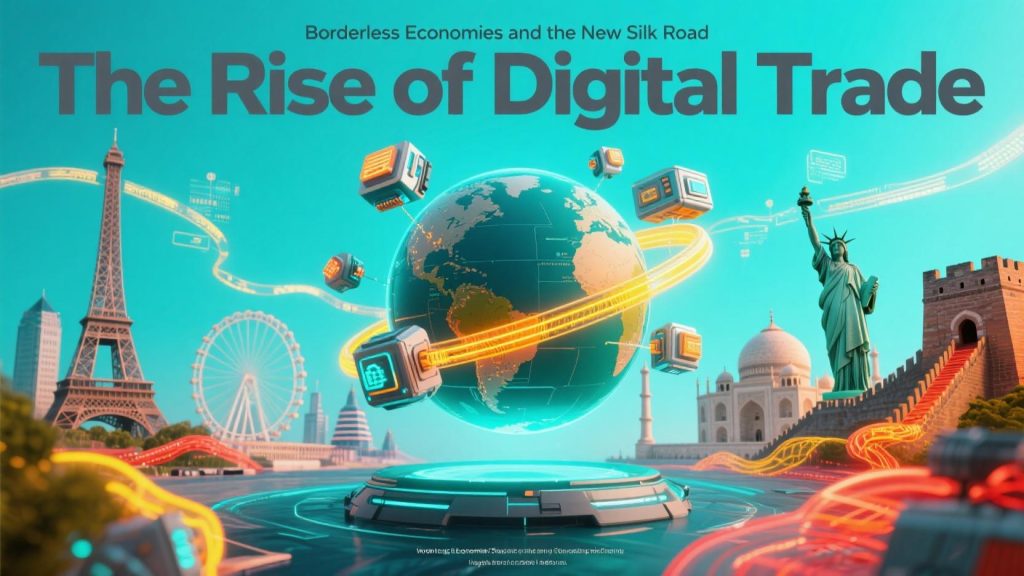In the era of digital globalization, international commerce is no longer defined by the movement of physical goods, but by the flow of data, services, and ideas across borders. The old concept of trade — dominated by ports, tariffs, and oceanic transport — is being replaced by an invisible supply chain of cloud servers, AI algorithms, and digital platforms. This shift is reshaping global economic dynamics and redefining sovereignty in the 21st century.
The New Architecture of Trade
Today, over 60% of global economic growth is powered by digital services. According to the WTO’s 2024 Annual Report, digital trade now accounts for one-third of global trade value, a figure that will rise to 50% by 2030. The global expansion of e‑commerce platforms (Amazon, Alibaba), SaaS giants (Salesforce, Adobe), and digital marketplaces has enabled:
✅ Instant Market Entry: Small businesses can now access global markets from a laptop.
✅ Byte as the New Barrel: Data services rival oil and gas in economic value.
✅ Customs-as-Code: Smart contracts enable automated cross-border compliance.
New Winners and New Rules
The shift to digital trade has created new winners — nations with robust digital infrastructure and favorable policies:
-
Singapore has become the digital trade hub of Asia, accounting for 22% of the world’s digital services flows.
-
Estonia pioneered e‑residency and digital governance, making it a hotspot for global entrepreneurs.
-
The EU implemented the Digital Services Act (DSA) and Digital Markets Act (DMA), setting global standards for platform accountability and digital transparency.
Challenges of Borderless Trade
While digital trade creates new economic opportunities, it also introduces complex tensions:
❌ Data Sovereignty: Nations grapple with questions about who “owns” and governs data flows across borders.
❌ Cybersecurity and Trust: The rise of ransomware and state-backed cyber attacks threatens global supply chains.
❌ Digital Divide: The benefits of digital trade often bypass smaller, less connected nations, deepening global inequality.
The New Silk Road for the Digital Age
To fully harness digital trade, the international community must evolve its frameworks:
🌍 Adopt global digital standards and cybersecurity protocols.
🖥️ Invest in digital infrastructure for underserved nations, making connectivity a global priority.
⚖️ Reform international trade law (WTO) to recognize data and digital services as primary commodities.
The Road Ahead
As trade evolves from containers to code, the nations and businesses that adapt will dominate the new economic order. In this era, data is the new currency, connectivity is the new highway, and trust is the ultimate commodity.









